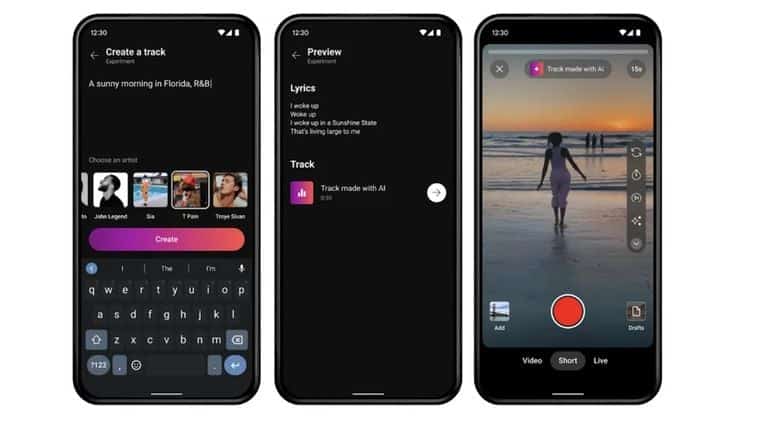As we head towards the holidays, every social app is pumping out new creative features, in the hopes of maximizing user engagement when attention is at its highest.
Today, it’s YouTube’s turn to come out with a new element, in the form of what it’s calling “Dream Track”, which will enable users to create music in the style of various famous artists via generative AI.
As outlined in this clip, Dream Track replicates the vocal stylings of some of the biggest stars, so you can come up with your own hits. So if you’ve always thought you had a good idea for a Charlie Puth song, now you can make it, as opposed to sending him an email and crossing your fingers.
As explained by YouTube:
“Starting today, 9 artists including Alec Benjamin, Charlie Puth, Charli XCX, Demi Lovato, John Legend, Papoose, Sia, T-Pain, and Troye Sivan who have chosen to collaborate in this experiment and work with us to shape the future of AI in music, are giving a small group of select US creators the chance to create unique soundtracks of up to 30 seconds for their Shorts. By simply typing an idea into the creation prompt and selecting a participating artist that appears in the carousel, an original Shorts soundtrack featuring the AI-generated voice of that artist will be produced for the creator to use in their Short.”
So you can’t create whole songs, as such, but snippets of new variations of tracks, based on the styles of approved artists.
Which also seems a little risky, right?
It was only months ago that the recording industry was scrambling its legal teams to decide on how it would approach Ghostwriter’s viral song that used a simulated voice of Drake. Almost every version of that song has now been pulled from YouTube on copyright grounds, based on complaints from Drake’s label.
So how does facilitating this directly improve on that situation?
It seems that record labels are hoping to get ahead of the issue by enabling approved versions, which will also include more transparent tagging, as well as monetization options.
As per YouTube:
“Despite the tremendous opportunity AI presents, we also recognize it’s a quickly evolving space that presents complex challenges. One of YouTube’s greatest strengths is our strong relationships with music industry partners. We’re committed to collaborating with them as we enter this new era, critically exploring together new opportunities and developing sensible and sustainable controls, monetization and attribution frameworks.”
Indeed, YouTube has been working with record labels over the past few months to establish an official approach to approved deepfakes, in an effort to stamp out misuse.
Will that work?
Probably not, but at least by providing a means to create AI versions, that’ll establish a clear benchmark for plausible deniability by the labels, as well as a way for music publishers to highlight future fakes, while also giving users a way to experiment in an official, traceable capacity.
So it may provide some means to get ahead of the issue, though increasingly convincing simulations are still likely to crop up from time to time.
But at least this way, the labels will still be able to work with YouTube to get unapproved variations taken down, while also monetizing any future AI hits that use simulations of their artists. YouTube also recently rolled out new rules that require users to tag AI-generated content.
In combination, this could help YouTube establish a better way forward for AI-based versions, which will keep it in good stead with the labels.



